2.2.2 Public Consumption
Introduction
Public consumption is the value of goods and services individuals receive through the public sector. Public consumption is allocated to individuals based on administrative records and, in some instances, survey data. Like private consumption, public consumption distinguishes education, health, and other public consumption.
Public education consumption consists of two parts: formal and informal education consumption. Formal education consumption is government spending on primary, secondary and higher education levels. The informal education consumption refers to expenditure on culture, religious studies and other types of education. Public health consumption consists of health care purchased by individuals and reimbursed through public programs, health care provided directly to individuals by government clinics and hospitals, and collective services, e.g., health education and preventative programs that are provided to the public at large. Health care purchased by individuals and reimbursed through public programs are also included.
Other public consumption consists of public goods and services, such as defense, justice and police, that are not targeted at particular age groups.
Public Education Consumption
Public formal education consumption by age is estimated by summing unit cost per student per level
weighted by the number of students by age in each level
, i.e.
, where l is a school level. Unit cost per student at each level of education is estimated by dividing public spending on education at that level by the reported number of students. Unit cost of education within each level is assumed not to vary by age. The number of students by age in each level
, available from administrative records or, if necessary, tabulated from a census or a household survey.
In addition to public formal education, public informal education consumption by age is estimated by dividing total public informal education consumption by total population by age. Public informal education consumption is not age-targeted, so it is allocated equally to everyone. Public education consumption by age is computed by summing public formal education consumption by age and public informal education consumption by age.
Public Health Consumption
Health care provided directly by government programs must be allocated using administrative records, e.g., patient information; and information about the kinds of health care services being provided (child and maternal health, etc.) Note that health care costs associated with pregnancy and birth are assigned to the mother.
Health care purchased by individuals and reimbursed through public programs are captured in household expenditure surveys, and hence, these age profiles can be estimated using the methods described in the section on private health spending.
Collective health services are allocated on a per capita basis assuming that each individual consumes the same amount of these services.
Public Other Consumption
The per capita age profile of other public consumption is assumed to be constant, i.e., these goods and services are allocated equally to all members of the population.
Treatment of Other Public Individual Consumption
In some countries, especially in European countries, public consumption is classified into two main categories, public collective consumption and public individual consumption. By definition, public collective consumption is the part of public consumption that cannot be allocated to individuals due to its nature, and hence, will be allocated equally to all members of the population. Other public individual consumption is the part of public consumption that can be allocated by age. Publicly provided child day-care services in Finland is an example. These services will be allocated to the beneficiaries of the services.
